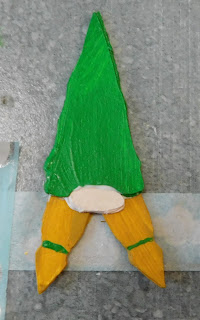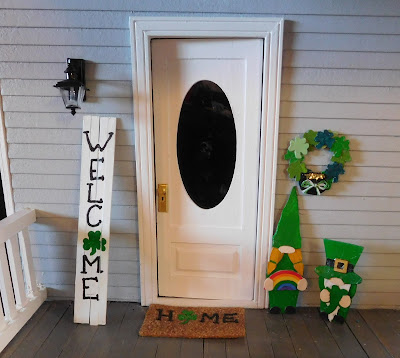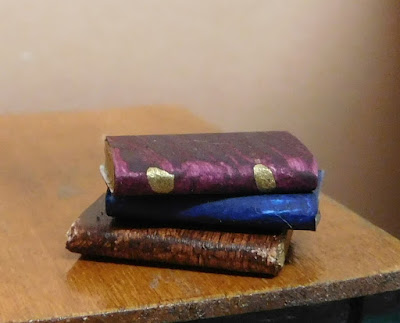This is really a trash to treasure project since everything I used were found objects. I started with the base of the footstool, a 1” piece cut from the tube from inside a roll of aluminum foil. The tubes for aluminum foil are skinnier and made from thicker cardboard than other rolls in my experience. To cut this I used my miter box (the regular size one from the hardware store) so I could cut the tube easily without smashing it.
For the top I traced the end of the tube onto a piece of cardboard that was the backing for a tablet of paper I had used up.
I then glued a piece of a cotton ball onto the top of the cardboard circle to give just a bit of padding.
Once the cotton ball is glued on it is time to cover the parts of the footstool. I used some plain white 100% cotton fabric. You can use any fabric that is lightweight, I do recommend using 100% cotton but any color or even small prints would be fun for this project. I didn’t have the energy or time to dig through my fabric stash so I used white with the intention of painting my footstool later in the project.
For the top cut a piece of fabric that is big enough to fold under the edges. I like to trim as I glue so I have enough fabric to work with. Try to make the fabric tight enough there are no wrinkles and the edges are as smooth as possible.
To cover the base I used a piece of the same fabric cut to about 3” by 4 ½”
Fold over one edge (on the shorter side) to form a hem and glue in place onto the tube being sure one long edge is lined up with the bottom of the tube. Once this is in place cover the outside of the tube with glue and wrap the fabric around the tube. There should be some overlap where the piece meets the spot you started. Glue this in place. Allow the glue to set up enough that the fabric won’t move around.
Now carefully fold the fabric down so that there is a fold at the top edge and there are two layers of fabric. Add a small bead of glue to hold the hem/seam in place and allow the glue to dry a bit.
To finish off the covering of the footstool spread some glue on the inside of the tube and neatly tuck the excess fabric up into the tube. This will give the footstool a nice finished appearance on the bottom and inside.
Then run a bead of glue around the top of the tube and add the top cushion to the footstool. Make sure it is centered and looks the way you want it to look then let this dry.
The next step is to add some cording to the spot where the top cushion meets the side of the footstool. I used some kitchen twine on mine but you also use yarn. The yarn would be the best solution if you are using a colored fabric or a patterned fabric and aren’t going to be painting the footstool. If you are not painting your footstool you are done as soon as the glue dries.
If you are going to paint your footstool do that at this point. I wanted a light beige color which of course I didn’t have so I mixed up a color that I liked. I did need to give mine 2 coats to get a good coverage.
Once dry you are done and ready to display the footstool in your mini scene.
As always I do want to sincerely thank all of you for watching my videos and reading my blog posts. It means so much to me that you are supporting me in this way. If I could ask you all to do just a bit more by subscribing to the channel and liking the videos and leaving comments. Those help more than you can imagine. Also if you could pass the links on to your friends I would appreciate it so much.























































